Discovering the Fundamentals of Alternating Current (AC)
Discovering the fundamentals of Alternating Current (AC) reveals the core technology behind modern electrical systems. Unlike Direct Current (DC), which flows in one direction, AC periodically reverses electron flow, creating an oscillating voltage represented by a sinusoidal waveform. This dynamic nature facilitates efficient long-distance energy transmission, minimizes power loss, and allows easy voltage transformation via transformers. This document explores AC systems, including alternators, motors, and transformers, and explains why AC is preferred for residential and industrial power distribution, providing a comprehensive understanding of AC applications.Catalog
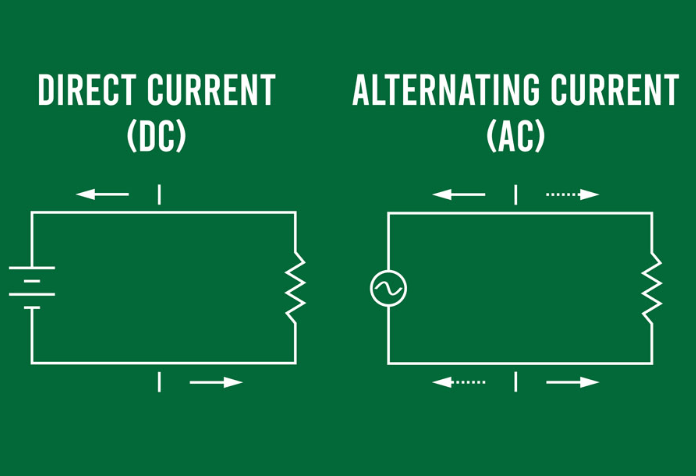
Figure 1: AC and DC
Difference between Alternating Current and Direct Current
Alternating Current (AC) is a common form of electricity used globally, differing from Direct Current (DC). Generated by rotary electromechanical generators, AC features voltage that periodically reverses direction, alternating between positive and negative charges. Unlike the steady voltage of DC, symbolized by a battery icon, AC is depicted by a sine wave, highlighting its oscillating nature. AC excels in high-power situations, such as operating electric generators and motors, and efficiently transforms voltage across various levels in power distribution systems with minimal energy loss through transformers. This efficiency reduces power losses in power plants and allows for long-distance transmission and safe operation of a wide range of devices in both home and industrial settings, making AC the ideal choice for diverse electrical scenarios.
Direct current (DC) is characterized by its constant voltage and unidirectional flow, essential for various electronic devices needing consistent and reliable power. DC can be generated using an AC generator with a commutator, a rectifier that transforms AC to DC, or batteries that produce a steady electron flow through electrochemical reactions. This one-way flow of charge is stable enough for everyday devices like cell phones, flat-screen TVs, flashlights, and electric vehicles. While the voltage can fluctuate slightly, the main feature of DC is that the electron flow doesn’t reverse, providing decisive power for numerous electronic applications and underscoring its significance in contemporary technology.
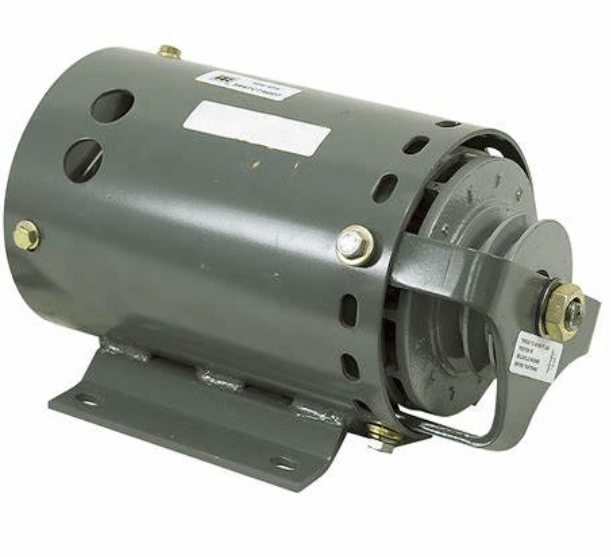
Figure 2: AC Alternators
Understanding AC Alternators
AC alternators generate electricity based on Faraday's Law of electromagnetic induction. They create alternating current by rotating a magnetic field around stationary wire coils using a mechanical turning shaft. As the rotor, fitted with magnetic poles, spins, it moves past these coils. This movement changes the magnetic flux through the coils, which reverses the voltage polarity and induces an alternating current in the connected electrical circuit.
Advantages of AC Alternators
AC alternators differ significantly from DC generators, which use brushes and commutators to maintain a steady polarity. These components often cause sparking and mechanical wear at higher speeds. AC alternators, on the other hand, do not require brushes and commutators. This absence simplifies their construction, enhances efficiency, and improves durability. With fewer moving parts subject to wear, AC alternators demand less maintenance and offer better reliability and longevity.
The ability of AC alternators to naturally achieve polarity reversal through their rotational mechanics simplifies their overall design and reduces potential points of failure. This makes them ideal for applications that require robust and reliable power generation. The streamlined operation of AC alternators ensures smoother and more consistent performance, which is especially key in settings that need a continuous and dependable electricity supply.
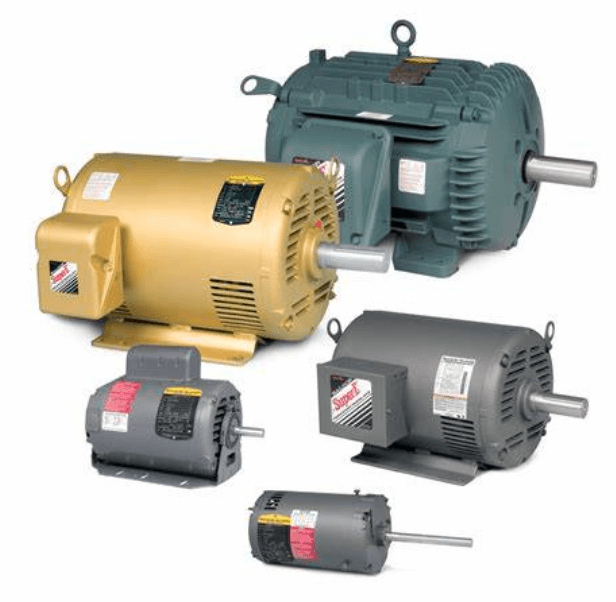
Figure 3. AC Motors
Basics of AC Motors
AC motors operate efficiently and reliably due to their design and mechanics. Unlike DC motors, which require mechanical brushes for operation, AC motors use a reversing magnetic field. This field is created by alternating current passing through the motor's stationary coils, which drives the rotor. The lack of physical contact between the stationary and moving parts, unlike in DC motors, significantly reduces wear and tear, enhancing the motor’s durability and reliability.
The way AC motors function simplifies their internal structure, leading to cost efficiencies and increased operational reliability. Without brushes, a common failure point in DC motors is eliminated, reducing maintenance needs and downtime. This simple construction also results in lower manufacturing and repair costs.
AC motors can operate at various speeds and torques by adjusting the frequency of the AC power supplied. This flexibility is particularly beneficial in industrial settings where different speed settings are decisive. The design efficiency of AC motors, emphasizing simplicity, efficiency, and reliability, showcases the advantages of AC technology in dynamic operational environments.

Figure 4: Transformers Transforming Current
The Role of Transformers in Electrical Engineering
Transformers are a must-have in the use of alternating current (AC) due to their ability to transfer electrical energy efficiently between circuits. They operate based on mutual induction, where electrical voltage is adjusted through the magnetic interaction between two coils, known as the primary and secondary coils. When AC flows through the primary coil, it creates a changing magnetic field that induces a voltage in the secondary coil. The induced voltage depends on the ratio of turns between the coils.
Voltage Adjustment and Power Distribution
Transformers can seamlessly adjust voltage levels up or down, making AC ideal for long-distance power distribution. Transmitting high-voltage AC reduces power losses significantly over large electrical networks, allowing for more economical and effective electricity distribution across vast areas. In contrast, transmitting direct current (DC) over similar distances would result in higher costs and inefficiencies due to greater line losses and the complexity of voltage conversion.
Transformers play a major role in modern electrical infrastructure by enabling the high-voltage transmission needed to minimize energy loss during transport. They then convert this high voltage back to lower, usable levels near the point of consumption. This dual functionality not only improves the practicality and cost-effectiveness of power distribution but also ensures more reliable and accessible electricity across widespread regions.
Advantages and Applications of Alternating Current
Major Use of AC
Alternating current (AC) is widely used around the world due to its numerous advantages over direct current (DC). One key advantage is its efficient management of high voltages and flexible voltage regulation. AC powers a broad range of equipment, from large industrial machines to common household appliances like refrigerators and dishwashers. This widespread adoption is largely because AC works well with transformers, which can easily and efficiently adjust voltage levels. This helps minimize energy loss during long-distance electricity transmission.
Safety and Convenience: AC also offers enhanced safety and operational convenience due to its inherent electrical properties. AC naturally cycles through a zero-voltage point, which makes it easy to interrupt with standard circuit breakers. This simple yet effective method of current interruption greatly increases safety by quickly isolating faults in the electrical system, preventing potential hazards. In disparity, DC lacks a natural zero point and requires more complex and costly interrupting technology, such as solid-state switches, to achieve similar safety levels.
Integration into the Electrical Grid: The integration of AC into the electrical grid and its associated devices demonstrates its functional superiority in many contexts. AC's advantages include energy efficiency, safety, and the practical ease of electrical maintenance and management. These collective benefits make AC the preferred choice for power distribution networks and end-user applications worldwide.
Methods of Producing Alternating

Figure 5: Generating Alternating Current (AC)
Alternators are central for generating AC. They have a simple structure where a rotating magnetic field interacts with a stationary coil, or loop of wire, converting mechanical energy into electrical energy through electromagnetic induction. As the magnetic field moves relative to the wire, it induces a voltage across the wire’s ends, resulting in an alternating current.
At this time, the AC distribution system utilizes a three-wire setup to ensure efficiency and safety. The hot wire carries power from the source to the destination. The neutral wire, connected to the earth, serves as a return path for the current, completing the circuit and providing stability. Additionally, the ground wire is also earthed, serving a serious safety function. It provides a pathway for fault currents to the earth, reducing the risk of electric shocks in case of insulation failures or other faults.
This structured approach to AC production and distribution highlights the operational efficiency, adaptability, and safety of AC systems. These features make AC a preferred method for electricity generation and distribution across diverse applications.
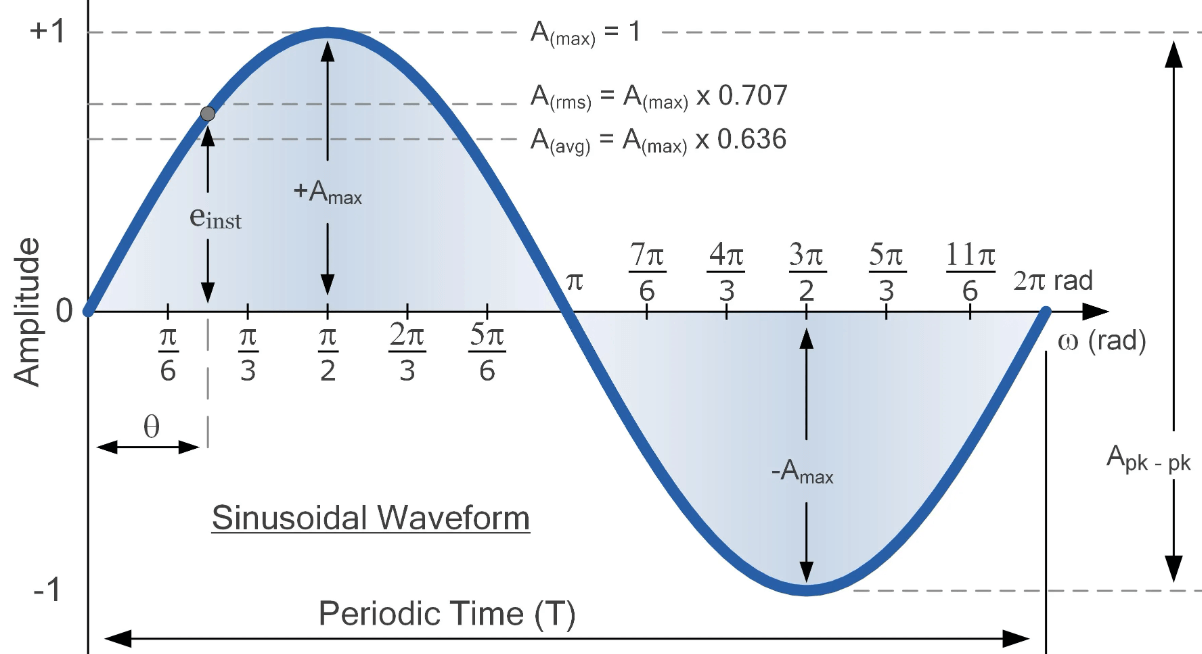
Figure 6: AC Waveform
Analyzing the Waveform of Alternating Current
Sinusoidal Waveform
Alternating Current (AC) is typically characterized by its sinusoidal waveform. This waveform ensures symmetrical oscillation, where the positive and negative halves of the cycle mirror each other. This uniform structure provides stable and continuous power delivery, making it effective for general electrical applications.
For specialized uses, such as in audio amplifiers that process analog signals, variations of the standard sinusoidal waveform are used. Triangular or square waveforms are chosen based on specific application needs. These waveforms offer different characteristics, like sharper transitions in amplitude, needed for certain electronic functions. For example, square waves are used in digital signal processing, where precise timing and clear signal distinctions are needed.
The choice of waveform in AC applications greatly influences system performance and suitability for specific technological needs. This adaptability highlights AC's perilous role in both power supply and electronic signal manipulation.
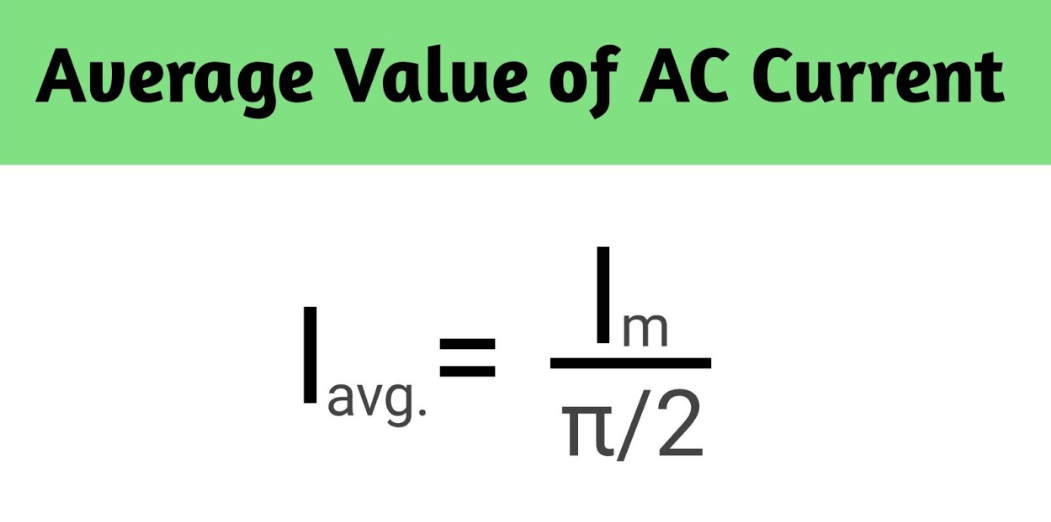
Figure 7: Average Value of AC
Calculating the Average Value of Alternating Current
In alternating current (AC), the average value over a complete cycle is zero. This is because the positive and negative halves of the cycle cancel each other out. However, for power delivery, only the magnitudes of these values matter, not their signs. This is where the root mean square (RMS) value comes into play.
Importance of RMS Value: The RMS value measures the effective power delivered by AC. It is decisive for designing and optimizing electrical systems because it reflects the actual power transmitted over time. By using the RMS value instead of peak or average values, engineers can ensure systems handle the true power demands, enhancing efficiency and reducing energy waste.
Application in Electrical Systems: Focusing on the RMS value is fundamental in both residential and industrial settings. Accurate power assessment using RMS ensures system integrity and operational reliability. This method helps maintain efficient and reliable power delivery, required for the smooth functioning of electrical systems.
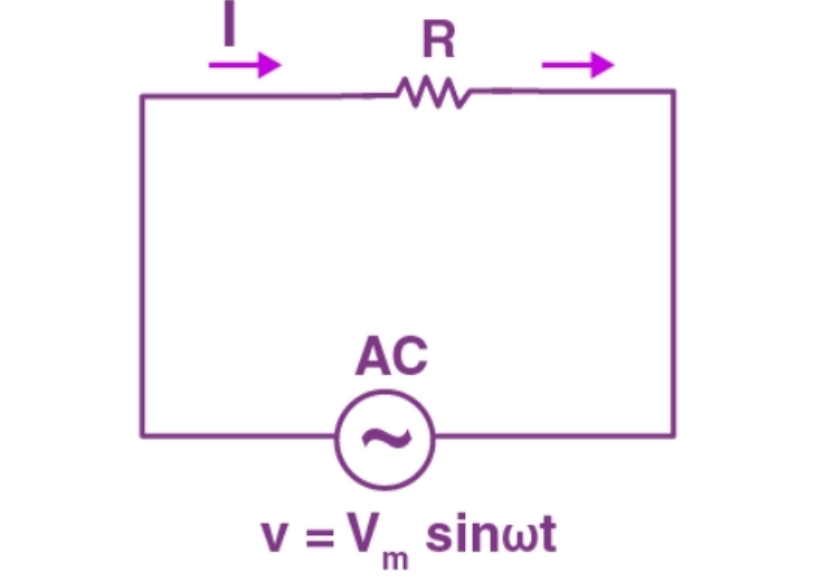
Figure 8: AC Circuit Containing Only Resistance
Characteristics of AC Circuits with Resistance Only
In AC circuits with only resistance, the voltage and current are perfectly in sync, mirroring the behavior seen in DC circuits. This alignment makes these circuits the simplest type within AC systems.
Power dissipation in these circuits is straightforward, described by the formula  where ( P ) is the power, ( I ) is the current, and ( R ) is the resistance. This formula indicates that the power dissipated is directly proportional to the resistance and the square of the current flowing through the circuit.
where ( P ) is the power, ( I ) is the current, and ( R ) is the resistance. This formula indicates that the power dissipated is directly proportional to the resistance and the square of the current flowing through the circuit.
This direct connection allows for easy and predictable calculations in systems with only resistive loads, such as heating elements and incandescent light bulbs. Understanding these principles is a high priority for designing electrical systems that operate efficiently and safely under pure resistive conditions, without the added complexity of inductance or capacitance.

Figure 9: AC Circuit Containing Only Inductance
Dynamics of AC Circuits with Inductance Only
In AC circuits that consist solely of inductance, the current lags behind the voltage by 90 degrees. This phase shift is required for the operation of devices that rely on time-varying magnetic fields, such as transformers and power supply inductors. During part of the AC cycle, energy is stored in the magnetic field and then released during another part. This allows for efficient energy management and transfer.
This phase difference is settling in various applications. For instance, it smooths electrical signals, regulates voltage in power grids, and operates electromagnetic relays. Understanding and exploiting this phase shift can help design circuits that use magnetic fields to store and delay energy, thereby improving the performance and efficiency of AC power systems.

Figure 10: AC Circuit Containing Only a Capacitor
The Behavior of AC Circuits with Capacitors Only
In AC circuits with only a capacitor, the capacitor stores energy in the electric field between its plates. Here, the current leads the voltage by 90 degrees. This phase rapport is central for applications involving tuning and filtering. Capacitors control the timing and magnitude of voltage and current, adjusting phase and frequency responses within the circuit.
The leading current characteristic in capacitive circuits is dynamic for optimizing signal processing in electronic devices like radios, televisions, and audio equipment. Precise control over frequency and phase allows engineers to fine-tune circuits, rejecting unwanted frequencies or enhancing desired signals. This capability improves overall system performance and efficiency in various electronic applications.

Figure 11: Measuring the Magnitude of Alternating Current (AC)
Quantifying the Magnitude of Alternating Current (AC)
Alternating Current (AC) is defined by its fluctuating nature, constantly changing direction and magnitude. This creates a waveform distinctly different from the steady output of Direct Current (DC). AC's cyclic behavior is needed for powering homes and businesses, offering a stark contrast to the constant voltage or current of DC.
Measuring AC's Frequency
To use AC effectively, its properties must be measured accurately. One key property is frequency, which is the number of complete cycles the waveform makes per second, measured in Hertz (Hz). Similar to how frequency affects the pitch of sound in acoustics, it plays a major role in various scientific fields.
Challenges in Measuring AC's Magnitude
Unlike DC, AC's constantly changing values make measuring its magnitude challenging. How can we measure something so unstable? The answer lies in specific statistical and mathematical methods that calculate an average or effective value representing AC's fluctuations.
Root Mean Square (RMS) Value
The root mean square (RMS) value is commonly used for this purpose. It provides a measurement equivalent to the DC value that would deliver the same amount of power to a load. Understanding and applying these measurement techniques are key for developing and optimizing electrical systems, ensuring they function correctly and devices operate efficiently within their electrical environments.
Understanding the AC Phase and Its Operational Implications
In Alternating Current (AC) systems, phase is a major concept, particularly when dealing with multiple AC waveforms. Phase refers to the timing relationship between different waveforms, focusing on their synchronization or alignment. When two AC signals are "out of phase," their peaks and troughs do not match up, resulting in a phase shift. This shift, measured in degrees, indicates the timing difference between the peaks of these signals.
Operational Impact of Phase Shift
Managing phase shifts is strong for the efficient operation of electrical and electronic systems. Incorrect phase alignment can significantly reduce system efficiency. For instance, motors may not run at their optimal efficiency, and transformers might not perform at their best. To address these phase-related issues, engineers use complex numbers. This mathematical approach captures both the magnitude and phase angle of an AC signal, providing a complete representation necessary for advanced circuit analysis.
Applying Fundamental Laws to AC Circuits
This dual representation of AC signals helps apply fundamental laws like Ohm’s Law and Kirchhoff’s Laws to AC circuits. Both amplitude and phase shift must be considered in these analyses. Understanding the phase is not just theoretical; it is required for designing effective and efficient systems. Mastery of phase interactions is foundational for tackling more complex topics in electrical engineering. Using complex numbers to simplify circuit analysis and improve system design is a needed skill for engineers as they advance in their studies and professional applications.
Conclusion
Overall, it becomes evident that both Alternating Current (AC) and Direct Current (DC) are key to the functioning of contemporary electrical and electronic systems. AC's versatility and efficiency in power transmission and transformation make it requisite for large-scale, high-voltage applications. While DC remains central for its reliability and consistency in low-voltage, stable applications like battery-operated devices. The exploration of their generation methods, such as AC alternators and DC batteries, alongside the operational principles of AC motors and transformers, showcases the breadth of engineering innovation and the practical implications of these technologies.
Moreover, the detailed examination of AC’s use in different circuit configurations, its advantages in safety and maintenance, and the major role of phase and RMS values in measuring and optimizing AC systems underscore the complexity and dynamic nature of modern electrical engineering. As the world continues to evolve technologically, the nuanced understanding of AC and DC, as presented in this article, will remain central to the development of more efficient, robust, and sustainable power systems.
Frequently Asked Questions [FAQ]
1. What do you mean by alternating current AC?
Alternating current (AC) is a type of electrical current where the flow of electrons switches directions periodically. Unlike direct current (DC) where electrons flow in one direction, in AC the electrons reverse their direction back and forth. This changing direction occurs in a cyclical pattern known as the frequency of the AC, typically measured in hertz (Hz).
2. Where is AC used?
AC is predominantly used for power distribution in residential, commercial, and industrial settings because it can be easily transformed to different voltages. This versatility allows electricity to be efficiently transmitted over long distances. Most household appliances, like refrigerators, ovens, and air conditioners, operate on AC power. It’s also used in offices and factories to power devices ranging from computers to heavy machinery.
3. What is an alternating current AC source?
An AC source is any device or system that generates alternating current. Common examples include power plants that use turbines to generate electricity. These turbines are driven by various energy sources such as water (in hydroelectric plants), steam (from fossil fuels or nuclear reactors), or wind (in wind turbines). The generated AC is then sent through transformers to adjust the voltage for different stages of power distribution.
4. What is AC and example?
Alternating current (AC) is an electrical current that periodically reverses direction while its voltage changes from positive to negative in a sinusoidal pattern. A simple example of AC is the electricity supplied to your home. It is used to power various household appliances such as lamps and microwaves.
5. What is the importance of alternating current?
Alternating current (AC) is key for modern electrical power distribution due to several key advantages:
Efficient Transmission: AC can be transported over long distances with less energy loss compared to direct current (DC). This efficiency is enhanced by the ability to easily change voltages using transformers.
Scalability: High voltages used for transmission can be easily stepped down to safer levels for use in residential and commercial settings, making it versatile and safe for a wide range of applications.
Generator and Motor Use: Most electric generators and motors are designed to use AC because it is easier and more cost-effective to build and maintain these devices in systems that operate on AC.
Economic: The infrastructure for generating, transmitting, and converting AC is well-developed and cost-effective, supporting a wide range of technologies and applications economically.